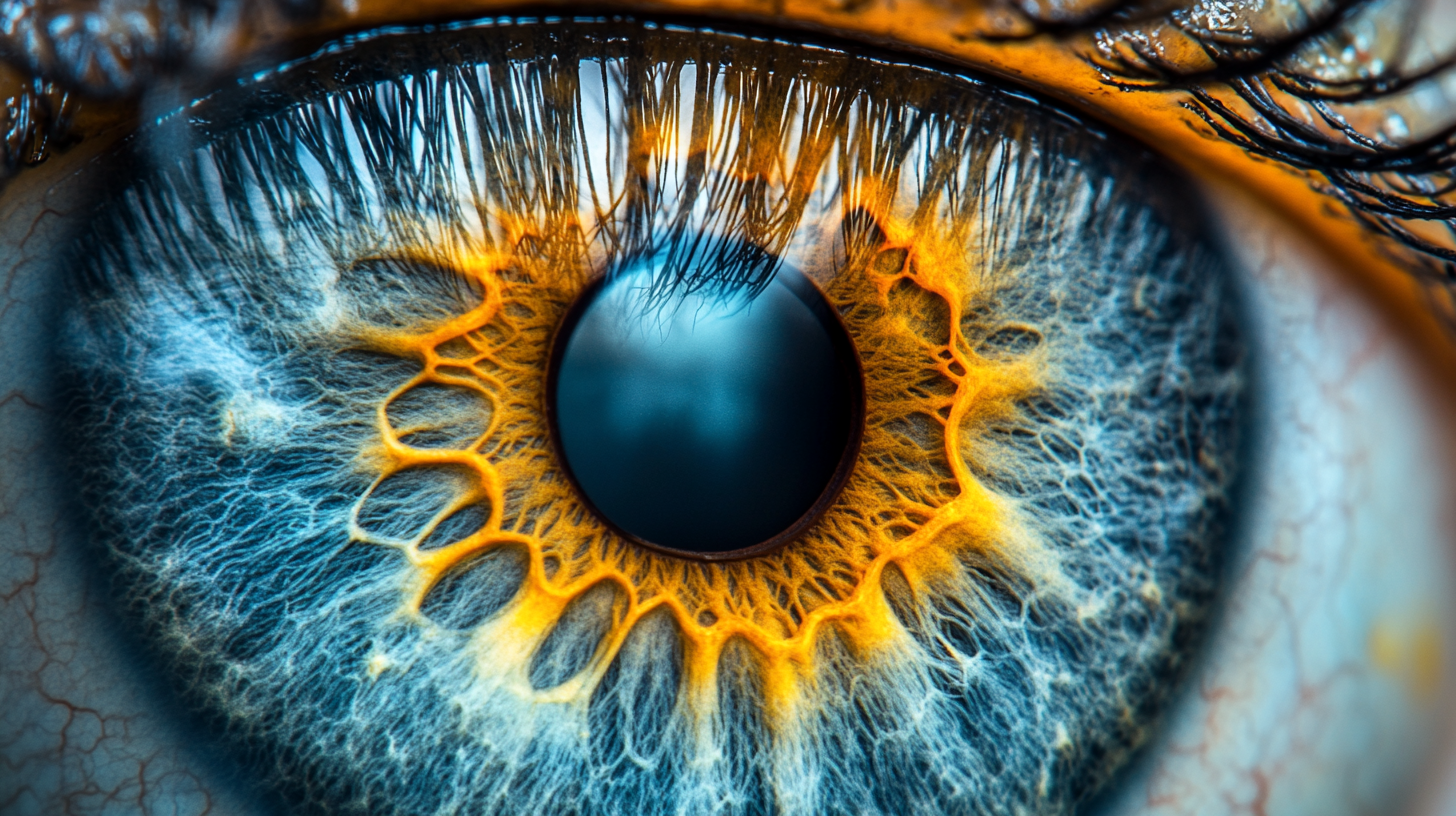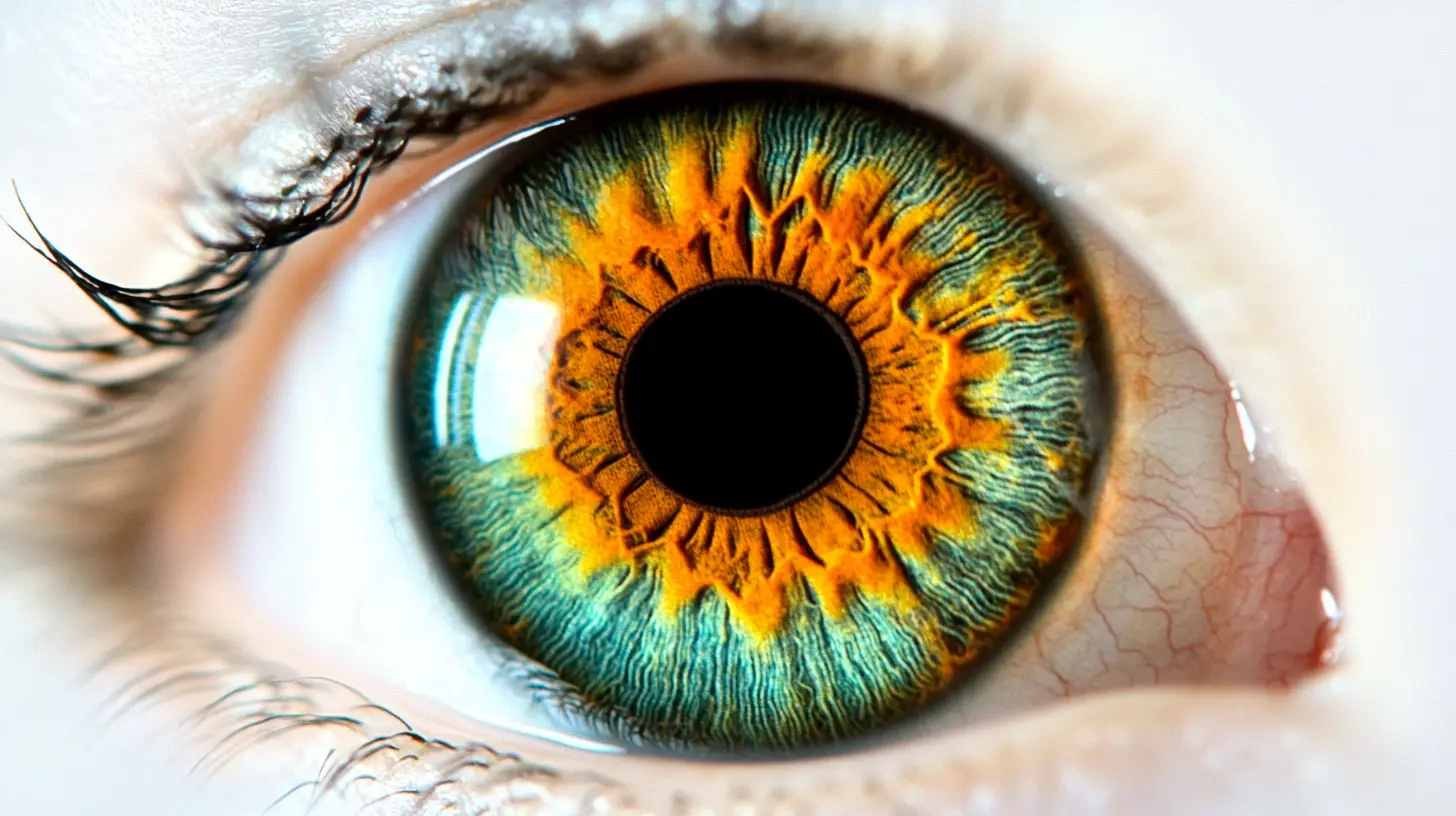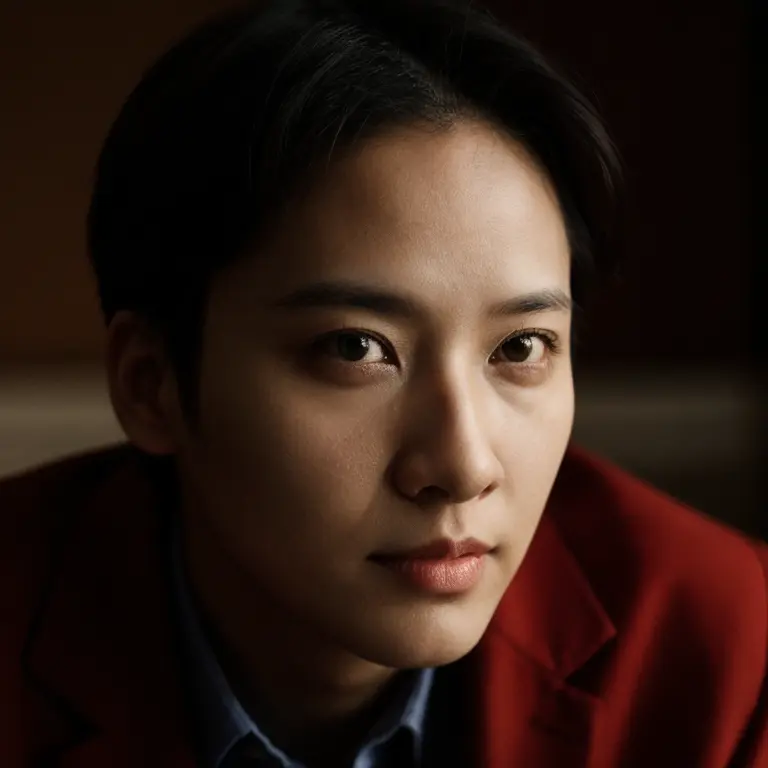Over the previous couple of years, there has been a massive increase in demand for Anti Fatigue Lenses as consumers are becoming aware that prolonged screen time takes a toll on their vision health. Grand View Research reports that the size of the anti-fatigue lenses market worldwide is expected to be $6.4 billion by 2025, with a CAGR of 5.6%. Such significant growth points towards a complete paradigm shift in consumer perspectives towards vision care products that not only offer comfort but also contribute to the enhancement of overall eye health. Given the increase in consciousness about digital eye strain, the introduction of high-end technology in anti-fatigue lens design will become very important for manufacturers who hope to carve out shares in this growing market.
JINRUISHI Optical Glasses Co., Ltd., Jiangsu Province, China, will take a crucial share in this changing scheme of things. With the product lineup covering mainstream lenses such as CR39 sunglass lenses, polarized lenses, and blue light-blocking lenses, JINRUISHI aims to meet the ever soaring demand for high-quality optical solutions. The company's pursuit of embedding advanced features in her products ensures she continues to hold sway in the anti-fatigue lenses arena. When we talk about future Anti Fatigue Lenses and their influence on vision care, it is timely to not only look at market aspects today, but technological innovations will also play a vital role tomorrow in the optical industry.

With an increase in awareness regarding eye comfort with digital screens affecting vision, anti-fatigue lenses are the latest trend. The more time the consumers have begun to spend in front of a computer or smartphone, the greater the demand for lenses that reduce discomfort from long hours of screen use. The market dynamics are shifting toward solutions that not only sharpen vision but equally help to reduce strain on the eyes. Such demand underlines the importance of design innovation in lens technology. Consumers are increasingly demanding lenses with blue light filtering and that offer adaptability to their lifestyle needs. Such lenses find favor among different demographics, especially millennials and Gen Z, who are invariably digitally engaged for work and leisure. The other factor driving acceptance is aesthetics; fashionable frames and lens coatings appeal to buyers who are style-conscious. The converging of eye care technology with everyday eyewear demonstrates a paradigm shift in consumer preference from products that just serve the purpose to those that complement a good quality of life through better visual health. In order to truly capitalize on the rapid changes being brought about in the market now, brands will have to take cognizance of consumers' preferences for personalized and functional anti-fatigue lenses. With more and more research and development done to market requirements, a continuous stream of innovation and product resonance will follow. As the visual ergonomics discussion matures, opportunities will emerge for brands to clearly position themselves as industry experts and thought leaders in anti-fatigue lens innovation with products designed to meet a socially relevant problem for an audience increasingly attracted to screen use.

An avalanche of advancements is set to sweep through the vision care industry, and technology is taking the lead, especially in the area of anti-fatigue lenses. As awareness regarding eye health increased globally, innovation was becoming imperative to address growing concerns regarding visual fatigue, especially in a world controlled by digital screens 24/7. Thus, emerging solutions are being devised not only for comfort but to also work on clarity and reduction of eye strain, opening up new avenues for vision care manufacturers.
The global ophthalmic lenses market will reportedly be valued at approximately $1.134 billion in 2024 and will rise to almost $2.186 billion by 2032. The fast growth of the market establishes the rising demand for advanced optical solutions like anti-fatigue lenses, which cater to the needs of a tech-savvy population. To this end, companies are pouring resources into R&D to develop lenses that optimize visual performance by integrating state-of-the-art technologies, from blue light filtering to adaptive lens systems, thereby addressing modern lifestyle challenges.
Moreover, initiatives focusing on youth eye health are piling up. Advanced biometric tools for myopia management are making effective inroads into vision-related problems in children and adolescents. With lens technology continuing to evolve, the future of vision care seems bright as it aims to benefit and enhance the eye health of all age groups in a rapidly digitalizing world.

In an increasingly integrated digital world, the need for anti-fatigue lenses in vision care raises even for the age group of 52 years and older, where presbyopia is most prevalent. Anti-fatigue lenses are designed to reduce strain on the eyes as it is a long-term application of various digital devices with the new paradigm of modern-day digital eye comfort. With the exploding elderly eyes market worth around 342.15 billion Yuan in China, this leaves a big opportunity for firms to venture into developing and manufacturing the advanced lenses.
Several recent cases from abroad emphasize the revolutionary power of anti-fatigue lenses to address older adults' unique need for quality vision. For example, manufacturers are developing adaptive-natured lenses that would design the prescription according to the digital habits and environment of the user. This tailoring not only enhances visual performance, but it also becomes an integral part of overall welfare as the users spend much more time using their screens throughout the day.
The coming technology within the lens field will dynamically shape the future of vision care. The common feature of many anti-fatigue lenses-they help in solving common problems related to discomfort in vision-for the growing numbers of aging populations and other users of digital devices is likely to be further extended with the invention of more types of anti-fatigue lens. The sector, in turn, will bring the benefits of the advancements in technology that are focusing on user experience to millions, with promises that "digital eye comfort" will extend to all.

As we approach 2025, understanding demographic shifts in the global market for anti-fatigue lenses has become pivotal for stakeholders in vision care. The increased digital device usage among all age groups has drastically changed the playing field for eye care. Above all, Millennials and Gen Z spend unprecedented hours in front of screens, thus becoming increasingly aware of eye strain and fatigue. This generation generates demand for special lens technologies that improve visual comfort and combat prolonged screen time's adverse effects.
As the population includes an increasing number of older adults, more vision-related challenges have arisen. This cohort seeks solutions not just for their vision problems but also for comfort and quality of life. Anti-fatigue lenses seem to fit the picture very well, marrying high-tech optical technology with ergonomics to address this specific audience. Eye care practitioners must become aware of these trends if they want to successfully customize their services and make recommendations that are relevant to different profiles of clientele.
The cross-generational interest in eye health lends itself to innovation opportunities in the lens market. Firms investing in the research and development of anti-fatigue lenses may position themselves to be trend leaders. With user feedback and testing, they can explore novel materials and designs to help create lenses that cater to the rapidly changing needs of an increasingly mobile and digital consumer.
With the increasing desire for visual comfort, anti-fatigue lenses are quickly redefining the vision care landscape. Reports state that the global anti-fatigue lenses market is likely to witness a massive growth spurt by 2025, with a projected CAGR of over 8%. The surge is driven by increasing screen time that comes with digitalization and an old-age population that needs increased visual support flexibility. Designed specifically for these conditions, anti-fatigue lenses alleviate the strain endured while prolonged use of digital screens, thereby offering users a better degree of comfort than traditional lenses.
Whereas in comparative analysis, anti-fatigue lenses hold numerous advantages over conventional ones. Traditional lenses either don't address the current challenges of digital devices causing visual discomfort/fatigue, or they do so very imperfectly. Anti-fatigue lenses use many modern technologies to meet today's users' vision needs, such as those that filter blue light and their progressive lens designs. In a report, it was found that 72% of people who changed from using traditional lenses to anti-fatigue lenses found a significant reduction in their eye discomfort during prolonged screen exposure.
Moreover, the anti-fatigue lenses incorporate user-centered design, which enhances their appeal. Unlike traditional lenses, which usually employ a one-size-fits-all approach, anti-fatigue lenses can be customized to suit individual prescriptions and user preferences. This shift not only caters to specific visual demands but also serves to empower users to take charge of their eye health - a monumental shift from traditional means of vision correction. Growing awareness and education around eye-care will see, in time, the anti-fatigue lens emerge as the standard option for many consumers looking for optimized visual performance.
The launch of anti-fatigue lens marked the breakthrough in vision care, which has come particularly forward due to the increasing digital world characterized by its peak screen time. The marketing mix becomes instrumental in presenting the anti-fatigue lens, affecting perceptions and encouraging acceptance and trial of these modern eyeglasses. If brands effectively communicate the advantages of anti-fatigue lenses, they will attract potential users who generally are unaware of the stress their eyes experience due to extended device use.
Social media campaigns, influence marketing, and targeted advertisements have a role in addressing a fairly broad range of audiences. In that sense, relatable content providing content on issues such as digital eye strain can be used to the benefit of the product. Satisfied-person testimonials also heighten credibility since a potential customer will listen to what their fellow consumers have to say. This emotional connection creates brand loyalty, with yay-sayers now becoming ambassadors for anti-fatigue lenses.
In addition, consumers are likely to develop more trust when they get to know the workings of the science behind these lenses; thus, educational programs can also be used to this end. Workshops, webinars, and articles can cut through the technicalities and explain how the lenses work to reduce fatigue and increase visual comfort in simple terms. With up-to-date knowledge, consumers tend to buy solutions aimed at daily living, which, in the long term, will promote market growth.
The advent of digital eye strain has gotten the attention of the ophthalmic lens industry, which increasingly focuses on the development of anti-fatigue lenses within its product array. This segment is projected to stand at $11.34 billion by the year 2014, with estimates indicating that between 2024 and 2032, the market will explode and leap to $21.86 billion. The market acceleration is connected to increased eye health awareness, where innovative lens technology, in the form of anti-fatigue lenses, is seen as beneficial in providing visual comfort and personal wellness.
The main aim of designing and producing anti-fatigue lenses is to supplement the comfort and pleasure of those individuals whose activity with digital devices exceeds a stipulated period thereby multiplying the strain on the eyes. With the aid of advanced technologies, the lenses reduce eye strain, thereby enhancing sharpness of sight and minimizing eye-shift under habitual conditions. As the number of people staying glued to their digital devices for a longer time grows, demand for products that ease digital eye strain will find rapid growth within the larger vision care market.
Response to the demand, generated by these trends, is present and very palpable, reflected in greater efforts on the part of optical shops, clinics, and services offered by the county health departments and libraries in Seattle and King County, where free-of-charge or donation-based eye screenings are progressively scoring high levels of attendance, pointing out our focus on eye health and creating new interest in increased access to vision services. As long as the expansion of the anti-fatigue lens market occurs, it will be imperative for health practitioners and optical outlets to impart this knowledge to clients regarding the benefits of using these lenses to enable them to make informed decisions about the state of their eye health in a digital yet convenient world.
Thanks to a fortifying awareness about this very phenomenon in the digital age, the anti-fatigue lens sector is set to undergo great transformation. The anti-fatigue lens market is, according to the Global Vision Care Market report, set to register a CAGR of more than 7% between 2023 and 2025. Such growth offers manufacturers both opportunities and challenges. With increased awareness of detrimental effects on eye health from excessive screen time, manufacturers would either need to upgrade or create new products to meet changing customer demands.
Yet, this environment poses challenges: The key challenge that persists is that of keeping up with technological advancements in lenses. There is a growing demand for quality anti-fatigue lenses featuring a blue light blocker. The International Optometric Association recently surveyed and found that 77% of optometrists are seeing an increase in the number of patients complaining about digital eye strain, which highlights the importance for manufacturers to invest in research and development.
Partnerships and distribution channels present opportunities for manufacturers. These would foster trust and credibility with consumers through better engagement with optometrists and vision care specialists. With an estimated growth of online purchasing and an anticipated rise to $2 billion in direct-to-consumer sales by 2025, manufacturers must also ensure their online presence and marketing strategies are directed toward capturing this growing segment.
Thus, the anti-fatigue lens market is at that critical phase where innovation, patent knowledge, and consumer participation will be the determinants of this very essential sector's ambit in vision care.
Anti-fatigue lenses are designed to alleviate eye strain caused by prolonged use of digital devices, enhancing digital eye comfort and improving visual clarity.
The rising awareness of eye comfort and the impact of digital screens on vision have led to higher demand for lenses that help relieve discomfort associated with extended screen use.
The primary consumers of anti-fatigue lenses are millennials and Gen Z, along with older adults aged 52 and above who commonly experience presbyopia and increased digital device usage.
Consumers increasingly prioritize lenses that incorporate blue light blocking and adaptive features to cater to their lifestyle needs and enhance visual comfort.
Fashionable designs in frames and lens coatings are attracting style-conscious buyers, demonstrating the importance of aesthetics alongside functionality in the anti-fatigue lens market.
Brands can capitalize on the growing elderly eyewear market and innovate products based on user feedback, focusing on personalized and functional anti-fatigue lenses.
Anti-fatigue lenses provide crucial solutions for the aging population, addressing specific visual discomforts and enabling better engagement with digital devices through improved eye comfort.
Research and development efforts that consider user feedback are vital for creating innovative anti-fatigue lenses that meet consumer demands and enhance their quality of life.
The elderly eyewear market in China is currently valued at approximately 342.15 billion yuan, highlighting significant economic opportunities for developing advanced lens technologies.
By prioritizing user experience and leveraging technological advancements, the eyewear industry can enhance digital eye comfort and improve the quality of life for a broad demographic.






